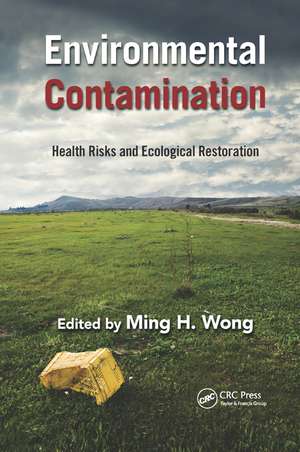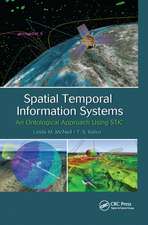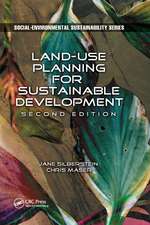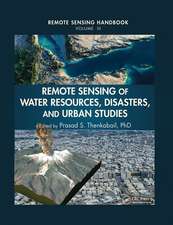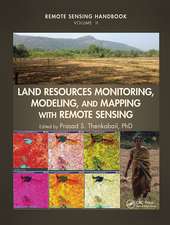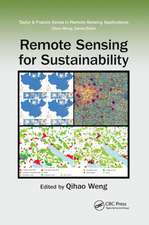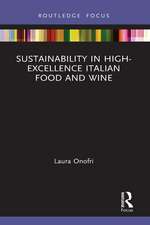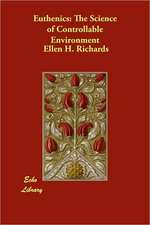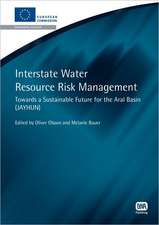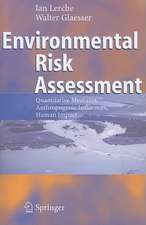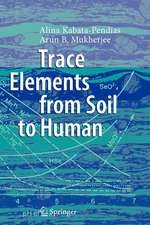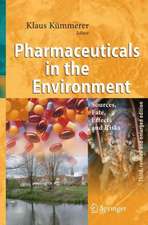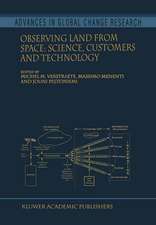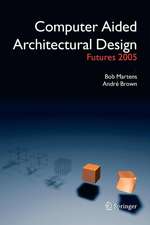Environmental Contamination: Health Risks and Ecological Restoration
Editat de Ming Hung Wongen Limba Engleză Paperback – 2 oct 2019
With the speed and scale of recent socioeconomic development, particularly in regions with less stringent environmental regulations, it is evident that various industrial activities have given rise to tremendous environmental degradation and severe health problems. The book begins with a description of current problems and future trends of pollutants, as well as their impact on the environment and human health. It then focuses on emerging contaminants, such as flame retardants and electronic waste. The book also examines research on environmentally friendly and sustainable solutions to remediate contaminated lands, exploring cutting-edge bioremediation and phytoremediation technologies. Chapters discuss arsenic biomethylation, copper homeostasis, microbial transformation of phthalate esters, the potential function of paddy fields in phytoremediation, the use of constructed wetlands for pollution control, phytostabilization of arsenic-contaminated sites, and more.
This timely book provides readers with a highly focused reference on some of the most urgent environmental and health issues and research topics. These include e-waste recycling and arsenic and heavy met
| Toate formatele și edițiile | Preț | Express |
|---|---|---|
| Paperback (1) | 489.26 lei 6-8 săpt. | |
| CRC Press – 2 oct 2019 | 489.26 lei 6-8 săpt. | |
| Hardback (1) | 994.26 lei 6-8 săpt. | |
| CRC Press – 24 iul 2012 | 994.26 lei 6-8 săpt. |
Preț: 489.26 lei
Preț vechi: 575.60 lei
-15% Nou
Puncte Express: 734
Preț estimativ în valută:
93.65€ • 101.76$ • 78.72£
93.65€ • 101.76$ • 78.72£
Carte tipărită la comandă
Livrare economică 21 aprilie-05 mai
Preluare comenzi: 021 569.72.76
Specificații
ISBN-13: 9780367381035
ISBN-10: 0367381036
Pagini: 518
Dimensiuni: 156 x 234 x 27 mm
Greutate: 0.45 kg
Ediția:1
Editura: CRC Press
Colecția CRC Press
ISBN-10: 0367381036
Pagini: 518
Dimensiuni: 156 x 234 x 27 mm
Greutate: 0.45 kg
Ediția:1
Editura: CRC Press
Colecția CRC Press
Public țintă
Academic and Professional Practice & DevelopmentCuprins
Environmental Contamination: Health Risks and Ecological Restoration. Part I Health Impacts and Risk Assessment: Health Impacts of Toxic Chemicals in the Pearl River Delta: The Need for Healthcare Reform? Heavy Metal Overloads and Autism in Children from Mainland China and Hong Kong: A Preliminary Study. Endocrine-Disrupting Contaminants and Their Effects on Reproductive and Developmental Health. Assessing Health Risks from Arsenic Intake by Residents in Cambodia. Pragmatic Approach for Health Risk Assessment of Bauxite Tailing Waste Materials. Part II Emerging Chemicals and Electronic Waste: Polybrominated Diphenyl Ethers in China: Sources, Trends, and Their Adverse Impacts on Human Health. Removal of Persistent Organic Pollutants and Compounds of Emerging Concern in Public-Owned Sewage Treatment Works: A Review. Inverse Relationship between Urinary Retinol-Binding Protein, Beta-2-Microglobulin, and Blood Manganese Levels in School-Age Children from an E-Waste Recycling Town. Mitigating Environmental and Health Risks Associated with Uncontrolled Recycling of Electronic Waste: Are International and National Regulations Effective? Decision-Making Support Tools for Managing Electronic Waste. Part III Ecological Restoration of Contaminated Sites: Bioremediation: Biomethylation of Arsenic in Contaminated Soils. Handling Copper: A Paradigm for the Mechanisms of Metal Ion Homeostasis. Plant Selenium Metabolism: Genetic Manipulation, Phytotechnological Applications, and Ecological Implications. Microbial Transformation of Phthalate Esters: Diversity of Hydrolytic Esterases. Mixed Contamination of Polyaromatic Hydrocarbons and Metals at Manufactured Gas Plant Sites: Toxicity and Implications to Bioremediation. Part IV Ecological Restoration of Contaminated Sites: Phytoremediation: Toxicity and Bioavailability of Heavy Metals and Hydrocarbons in Mangrove Wetlands and Their Remediation. Origin of Pa
Notă biografică
Professor Ming Hung Wong, BSc (CUHK), MSc, Ph.D., DSc (Durham), MBA, DSc (Strathclyde), is dean of the School of Environmental and Resource Sciences at Zhejiang Agriculture and Forestry University, and chair professor of biology and honorary director of the Croucher Institute for Environmental Sciences at Hong Kong Baptist University. He served as the regional coordinator of Central and North-East Asia for a project entitled "Regionally Based Assessment of Persistent Toxic Substances" and recently joined a panel to review "Emerging Chemicals Management Issues in Developing Countries and Countries with Economies in Transition," sponsored by UNEP and the Global Environment Facility (GEF). He is editor in chief of Environmental Geochemistry and Health and an editorial board member of five other international scientific journals. Professor Wong has published over 490 peer-reviewed papers and 32 book chapters and has served as the editor of 25 books or special issues of scientific journals. He is currently the most cited Chinese scientist in the world in the field of environment/ecology, according to the Web of Science (26 June 2012).
For more about Professor Wong, see his profile at Hong Kong Baptist University.
For more about Professor Wong, see his profile at Hong Kong Baptist University.
Descriere
Bringing together the work of 62 distinguished scientists, this timely book offers a comprehensive view of the remediation of contaminated land. A one-stop resource, it covers historical and emerging contaminants, the issues of bioavailability of chemicals and associated human health risks, and the latest bio- and phytoremediation technologies. The book also contains numerous case studies—many of them drawn from the Asia-Pacific region—that look at the effects of rapid industrialization. It provides readers with a highly focused reference on important topics, including e-waste recycling, flame retardants, and arsenic and heavy metal contamination.
